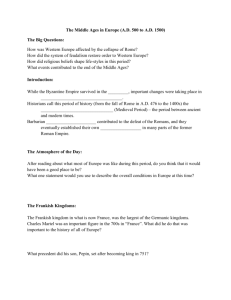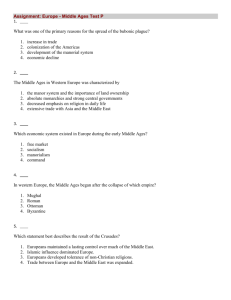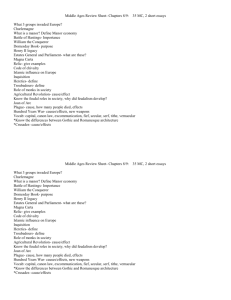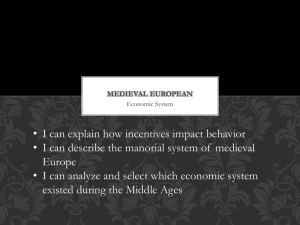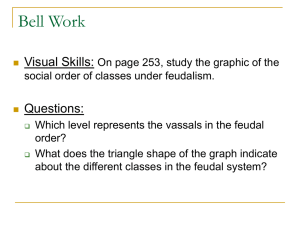Middle Ages Essay
advertisement
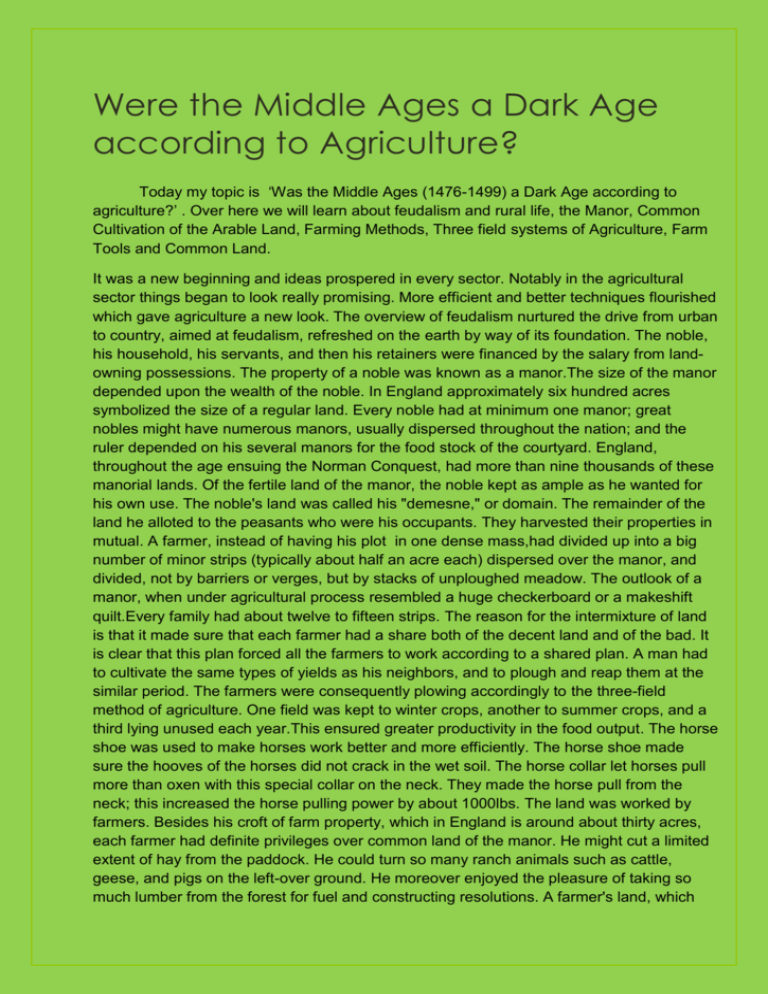
Were the Middle Ages a Dark Age according to Agriculture? Today my topic is ‘Was the Middle Ages (1476-1499) a Dark Age according to agriculture?’ . Over here we will learn about feudalism and rural life, the Manor, Common Cultivation of the Arable Land, Farming Methods, Three field systems of Agriculture, Farm Tools and Common Land. It was a new beginning and ideas prospered in every sector. Notably in the agricultural sector things began to look really promising. More efficient and better techniques flourished which gave agriculture a new look. The overview of feudalism nurtured the drive from urban to country, aimed at feudalism, refreshed on the earth by way of its foundation. The noble, his household, his servants, and then his retainers were financed by the salary from landowning possessions. The property of a noble was known as a manor.The size of the manor depended upon the wealth of the noble. In England approximately six hundred acres symbolized the size of a regular land. Every noble had at minimum one manor; great nobles might have numerous manors, usually dispersed throughout the nation; and the ruler depended on his several manors for the food stock of the courtyard. England, throughout the age ensuing the Norman Conquest, had more than nine thousands of these manorial lands. Of the fertile land of the manor, the noble kept as ample as he wanted for his own use. The noble's land was called his "demesne," or domain. The remainder of the land he alloted to the peasants who were his occupants. They harvested their properties in mutual. A farmer, instead of having his plot in one dense mass,had divided up into a big number of minor strips (typically about half an acre each) dispersed over the manor, and divided, not by barriers or verges, but by stacks of unploughed meadow. The outlook of a manor, when under agricultural process resembled a huge checkerboard or a makeshift quilt.Every family had about twelve to fifteen strips. The reason for the intermixture of land is that it made sure that each farmer had a share both of the decent land and of the bad. It is clear that this plan forced all the farmers to work according to a shared plan. A man had to cultivate the same types of yields as his neighbors, and to plough and reap them at the similar period. The farmers were consequently plowing accordingly to the three-field method of agriculture. One field was kept to winter crops, another to summer crops, and a third lying unused each year.This ensured greater productivity in the food output. The horse shoe was used to make horses work better and more efficiently. The horse shoe made sure the hooves of the horses did not crack in the wet soil. The horse collar let horses pull more than oxen with this special collar on the neck. They made the horse pull from the neck; this increased the horse pulling power by about 1000lbs. The land was worked by farmers. Besides his croft of farm property, which in England is around about thirty acres, each farmer had definite privileges over common land of the manor. He might cut a limited extent of hay from the paddock. He could turn so many ranch animals such as cattle, geese, and pigs on the left-over ground. He moreover enjoyed the pleasure of taking so much lumber from the forest for fuel and constructing resolutions. A farmer's land, which similarly included a household in the village, thus shaped a whole self-reliant unit. Agricultural in the Middle Ages was very recessive. Farmers did not know how to improve the soil by the use of nourishments or how to run for a appropriate spin of yields. Henceforward every year they refined only two-thirds of the terrestrial, allowing the extra third to lie "unused" (fallow), that it might improve its fertility. It is said that eight or nine masses of grain embodied the middling yield of an acre. Ranch animals were small, because systematic breeding had not yet arisen. A adult ox got a size narrowly larger than a calf of today, plus the swindle of a sheep regularly balanced less than two ounces. Farm utensils and tools were few and clumsy. The wooden ploughs only scratched the ground. Farrowing was completed with a hand tool little improved than a large drunkard. Grain was cut with a sickle, and grass was mown with a scythe. It took five men a day to reap and bind the harvest of two acres. Dying out of starvation was not possible as the Middle Ages were not the period to do it! As a result of the brilliant climate and superior agricultural knowledge, the West did tremendously fine. Iron utensils were in extensive use in the Byzantine Kingdom, feudalism in other chunks of the world presented effective organization of land, and enormous surpluses were formed so that animals were served on grains and not grassland. Public safety was also definite under the feudal system and so harmony and wealth was the ration for most persons. As with the three felid system, the heavy plow and the plow horse, these led into the feedback cycle of producing more population growth, developing new lands, and importantly even more food, etc. These agricultural techniques implemented by the middle-aged people proved to be so successful that cultivation boomed and yield per unit land improved dramatically and was many times more than that seen before the middle age. With advancing time, better and more proficient measures developed which greatly helped the peaple of the middle ages. The Three Field system Year I Year II Year III Year IV Field 1 Field 2 Winter crop Summer crop Fallow Fallow Winter crop Summer crop Fallow Winter crop Field 3 Summer crop Winter crop Summer crop Fallow Bibliography’s "Eating Medieval." understoodbackwards. N.p., n.d. Web. 11 Nov 2011. <http://www.understoodbackwards.net/2010/09/09/eating-medieval/>. "Economics of English Agriculture in the Middle Ages." wikipedia. N.p., n.d. Web. 7 Nov 2011. <http://en.wikipedia.org/wiki/Economics_of_English_Agriculture_in_the_Middle_Ages>. "Farming in the Middle Ages." http://www.middle-ages.org.uk. N.p., n.d. Web. 6 Nov 2011. <http://www.middle-ages.org.uk/farming-middle-ages.htm>. "Medieval Manor Houses." britainexpress. N.p., 1951. Web. 11 Nov 2011. <http://www.britainexpress.com/architecture/medieval-manors.htm>. "The agricultural revolution in medieval Europe." flowofhistory. N.p., n.d. Web. 11 Nov 2011. <http://www.flowofhistory.com/units/west/10/FC63>. . "The Farmer's Life." library.thinkques. N.p., n.d. Web. 11 Nov 2011. <http://library.thinkquest.org/10949/fief/medfarmer.html>. "Top 10 Reasons The Dark Ages Were Not Dark." http://listverse.com. N.p., n.d. Web. 6 Nov 2011. http://listverse.com/2008/06/09/top-10-reasons-the-dark-ages-were-not-dark/
